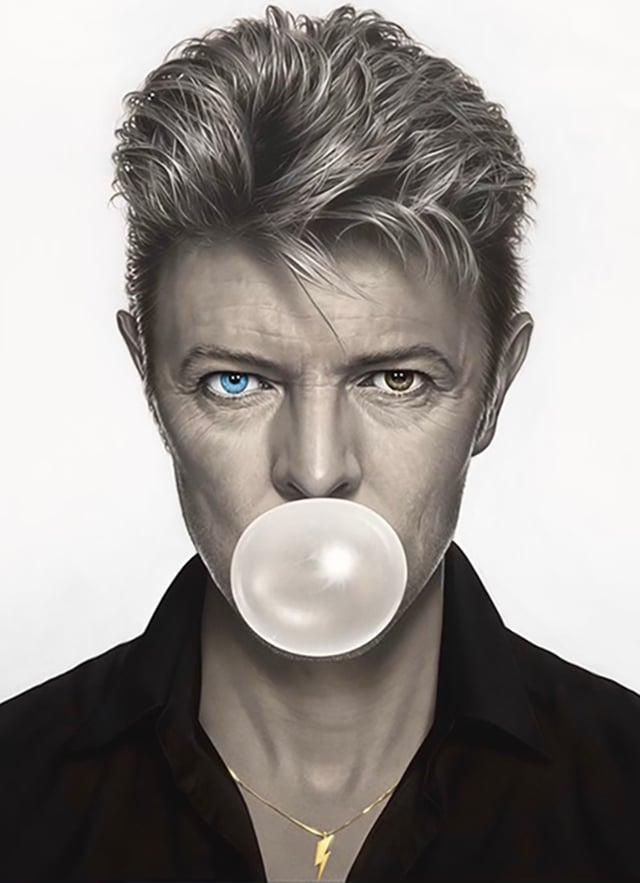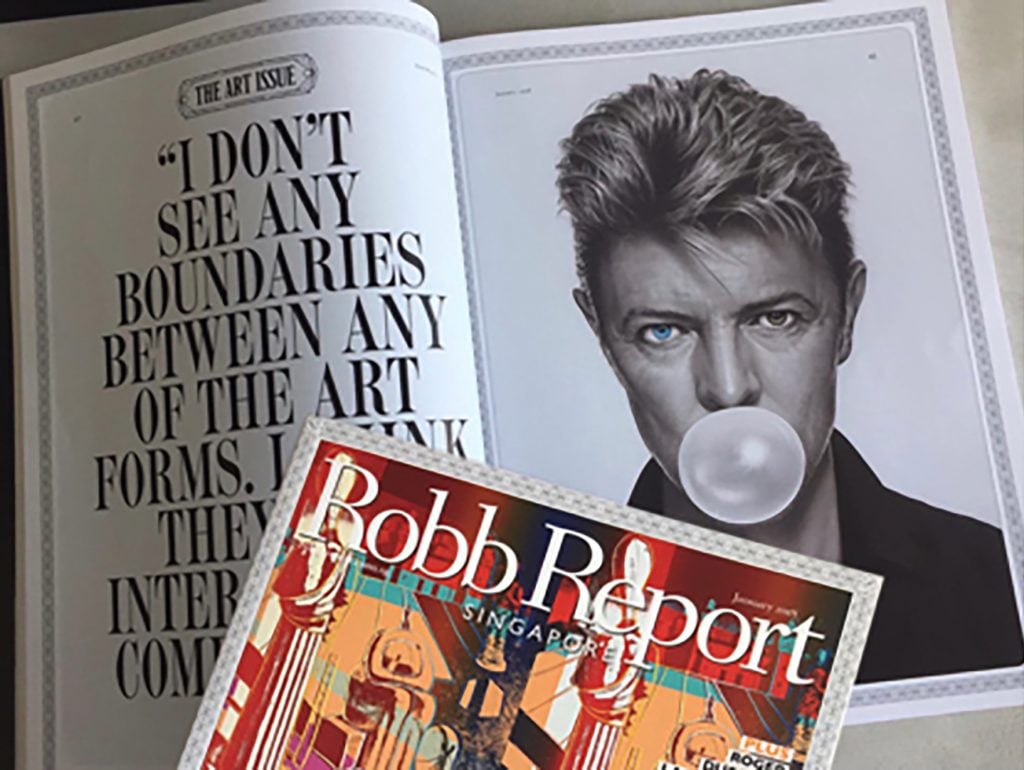Gallery Network
A Years-Long Intellectual Property Battle Over a Painting of David Bowie Has Been Dismissed by a Berlin Court
The decision found that Michael Moebius's painting did not infringe on a 1995 photograph of Bowie.

The decision found that Michael Moebius's painting did not infringe on a 1995 photograph of Bowie.

Artnet Gallery Network

Even if you don’t recognize the name of German artist Michael Moebius, you probably know his work. The artist’s eye-catching depictions of Audrey Hepburn and Marilyn Monroe blowing bright pink or blue bubble gum (his signature motif) have been widely reproduced on magazine covers.

Aladdin Sane in the Robb Report Gift Guide.
However, the success of these images has sometimes brought complications. For several years, the artist has been embroiled in a series of disputes with the English photographer Gavin Evans over alleged similarities between Moebius’s 2017 painting of David Bowie, Aladdin Sane, and Evans’s 1995 series of photographs of the musician known as “The Session.”
Moebius recently (at the end of 2020) won a claim brought against him by Evans in Berlin Federal Court, in which Evans contested that Moebius’s work infringed his copyright. Evans, who is now based in Berlin, has spent decades photographing celebrities including Bowie, Juliette Binoche, Bjork, and Nick Cave. Moebius, however, said his portraits are the unique amalgamation of studying numerous sources images of his subjects.

Michael Moebius, Aladdin Sane (2017). Courtesy of the artist.
Evans filed a legal claim against Maddox Gallery in London after Moebius’s series was displayed there in 2018. It was ultimately settled for an undisclosed sum. Thereafter, Evans filed suit against Moebius in the U.K.
Fighting back, Moebius initiated proceedings against Evans in Germany; Evans filed a counterclaim, moving his case to Berlin. The case was resolved by a three-judge panel in Moebius’s favor, and Evans’s claim of infringement was dismissed as unfounded.
The court found that Moebius’s work differed from Evans’s in both form and message. “It radiates softness and tranquility, which is primarily caused by the altered eye area,” the court said of Moebius’s image. “The drawing shows a world-famous artist performing an everyday, yet absurd gesture with great seriousness. By contrast, Evans’s photograph is defined by the strong contrast in its lighting and the vertical line formed by finger and nose. In it, Bowie “commands the viewer to remain calm,” the court said. The court added, “Anyone may make drawings that show David Bowie frontally. There is no creative value in this that can be attributed to a particular artist alone.”
“It was in our best interests to leave it up to the German courts to decide whether or not there was an infringement,” Kevin Esfandi, an independent representative for the Moebius team, said.
Intellectual property specialist Torsten Bremer of Bremer Rechtsanwaelte represented Moebius in the case. Evans was represented by Klinkert Rechtsanwaelte in Germany. His lawyers did not immediately respond to a request for comment.
Moebius is now in the process of attempting to recover six-figure legal costs. In a statement, the artist said: “Where there is no violation of the law there is no damage, so the third party settlements and all costs should be returned.”